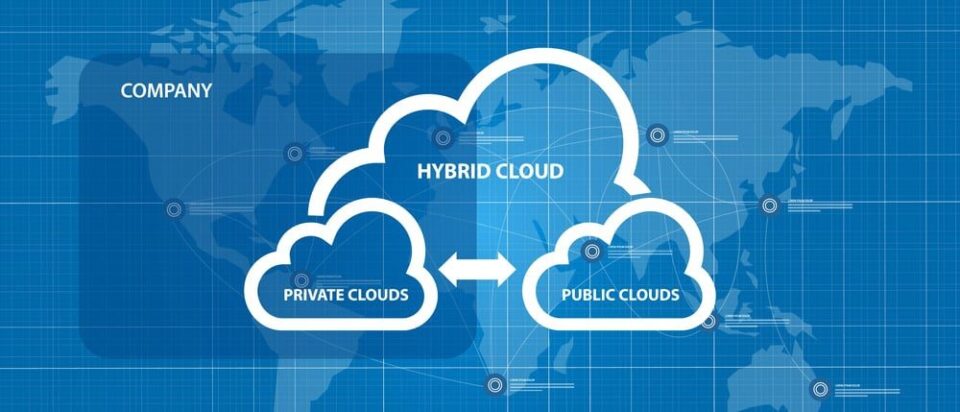In the modern digital landscape, businesses are increasingly turning towards Hybrid IT environments to optimize their operations. This approach blends on-premises, private cloud, and public cloud services, offering a versatile and dynamic infrastructure. However, with these benefits come unique challenges that organizations must skillfully navigate.
Understanding Hybrid IT Environments
Hybrid IT is more than just a combination of cloud and on-premises infrastructure. It represents a strategic approach to IT that aligns with business goals. It offers flexibility, scalability, and the ability to rapidly deploy new services. Understanding the components and their interplay is crucial for maximizing the benefits of a Hybrid IT environment.
Best Practices for Hybrid IT Management
- Strategic Planning: Develop a clear roadmap that aligns with your business objectives. This includes understanding which workloads are best suited for the cloud and which should remain on-premises.
- Security and Compliance: Implement robust security measures across all environments. Regularly update your compliance protocols to meet the latest regulations.
- Cost Management: Monitor and manage costs across different environments. Use tools to gain visibility into spending and avoid unexpected expenses.
- Performance Optimization: Regularly assess and optimize the performance of your infrastructure. This includes load balancing between on-premises and cloud resources.
- Workforce Training: Ensure your team is well-versed in managing and operating a Hybrid IT environment. Continuous training and development are essential.
Challenges in Hybrid IT Environments
- Complexity in Management: Managing a Hybrid IT environment is inherently complex. It involves orchestrating different platforms, vendors, and technologies.
- Security Risks: The diverse nature of Hybrid IT can introduce security vulnerabilities. It’s crucial to have a unified security strategy that covers all aspects of the infrastructure.
- Compliance Issues: Staying compliant can be challenging when data and applications are spread across multiple environments.
- Integration and Compatibility: Ensuring seamless integration and compatibility between different systems and applications can be a major hurdle.
The Role of Multi-Cloud in Hybrid IT
Multi-cloud strategies are becoming an integral part of Hybrid IT environments. By utilizing multiple cloud services, organizations can avoid vendor lock-in, enhance disaster recovery, and optimize their workloads based on the strengths of each cloud provider. However, this approach requires careful management to ensure consistency and integration across platforms.
Emerging Technologies and Hybrid IT
Emerging technologies like AI, IoT, and edge computing are increasingly being incorporated into Hybrid IT strategies. These technologies can enhance operational efficiency and open up new opportunities, but they also add layers of complexity to the IT environment.
Maintaining Flexibility and Scalability
One of the key advantages of a Hybrid IT environment is its flexibility and scalability. It’s crucial to maintain these qualities by regularly reviewing and adjusting your strategy in response to changing business needs and technological advancements.
Optimizing Workload Placement in Hybrid IT
An essential aspect of managing a Hybrid IT environment is the strategic placement of workloads. This involves determining whether a workload should be hosted on-premises, in a private cloud, or in a public cloud. Factors influencing this decision include performance requirements, data sensitivity, compliance needs, and cost. Effective workload placement can enhance efficiency and ensure that each component of the Hybrid IT environment is utilized optimally. Leveraging data analytics can aid in making these decisions, providing insights into usage patterns and resource demands.
Enhancing Customer Experience through Hybrid IT
In today’s digital-first world, customer experience has become a critical competitive differentiator. Hybrid IT environments can play a pivotal role in enhancing this experience. By leveraging the agility and scalability of cloud resources, businesses can rapidly deploy and scale customer-facing applications as demand fluctuates.
Additionally, the ability to process and analyze large volumes of data in real-time – a capability often enhanced by cloud computing – can lead to more personalized and responsive customer interactions. However, ensuring a seamless customer experience requires meticulous planning and execution, particularly in integrating various components of the IT infrastructure.
Future Trends and Evolving Landscape in Hybrid IT
As technology continues to evolve, so too will the landscape of Hybrid IT. We are likely to see an increased emphasis on automation and machine learning to manage the complexity of these environments more efficiently. Automation can streamline operations, from workload deployment to security updates, reducing the manual burden on IT teams.
Furthermore, as 5G technology matures, it will enable faster and more reliable connectivity, opening up new possibilities for Hybrid IT, particularly in edge computing scenarios. Businesses need to stay abreast of these trends and be ready to incorporate new technologies into their Hybrid IT strategies to remain competitive and agile in an ever-changing digital world.
Hybrid IT environments offer a range of benefits, from increased flexibility to improved efficiency. However, they also present unique challenges in terms of management complexity, security, and integration. By following best practices and being aware of the challenges, organizations can effectively leverage their Hybrid IT environments to achieve their business objectives. As technology continues to evolve, staying adaptable and informed will be key to success in this dynamic landscape.

